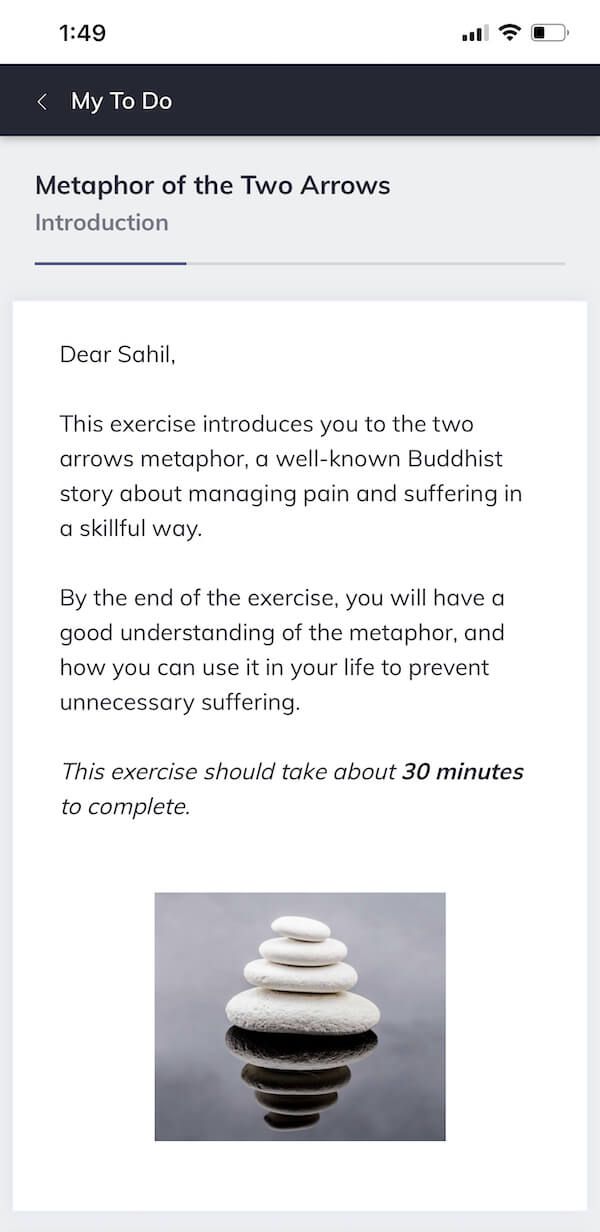17 Telemental Health Resources for Practitioners & Patients
 You might be wondering what the heck “telemental health” is; however, if you’ve ever heard about “telehealth,” then you’ll probably have a good idea of what it is.
You might be wondering what the heck “telemental health” is; however, if you’ve ever heard about “telehealth,” then you’ll probably have a good idea of what it is.
Just as telehealth refers to health care services provided from a distance—whether through online messaging, telephone, or video chat—telemental health is mental or behavioral health services provided through technology.
It allows psychiatrists, therapists, and other mental health professionals to reach their clients despite long distance or the client’s inability to come to the office.
It offers mental health care providers a way to practice with their patients even when they move across the country or work with shut-ins who find it difficult or impossible to leave their homes. It also offers patients a way to get the treatment they need with the convenience (and often affordability) they need in their busy lives.
Before you continue, we thought you might like to download our three Positive Psychology Exercises for free. These science-based exercises will explore fundamental aspects of positive psychology including strengths, values, and self-compassion, and will give you the tools to enhance the wellbeing of your clients, students, or employees.
This Article Contains:
- Telemental Health: A Growing Trend
- The Impact of Telemental Health
- Blended Care Approaches to Telemental Health
- The Benefits of Telemental Health
- What is Telepsychiatry?
- 2 Resources on Best Practices in Telemental Health
- 8 Software/Telehealth Solutions for Therapists
- 7 Software/Telehealth Solutions for Patients
- A Take-Home Message
- References
Telemental Health: A Growing Trend
According to Alessandra Rolffs at Health Leaders Media, two growing trends in health care are significantly impacting how care is provided and how it is received:
- behavioral health and
- telehealth.
As a society, we are becoming more and more aware of the vital role that behavioral health care plays in building a happy, healthy citizenry. As Rolffs points out, 43.8 million Americans experience mental illness, and mood disorders are the third biggest cause of hospitalization in young adults (18-44 years old) (Rolffs, 2019).
It’s clear that we need more services available for those who are struggling with mental health issues; however, there are many different barriers between patients and the care they need:
- Attitudinal barriers (e.g., wanting to deal with it on one’s own, feeling like treatment is or will be ineffective; Andrade et al., 2014)
- Financial barriers
- Lack of services available
- Lack of transportation
- General inconvenience (Mojtabai et al., 2011)
- Shortage of mental health care professionals (National Council for Behavioral Health, 2017)
Some of these barriers are becoming less of a problem; as attitudes about mental health issues and treatment evolve, the decision to “bear it and grin” will become less common.
However, some of these barriers may be worsening, including financial barriers to treatment and the shortage of qualified professionals to treat mental illness. In fact, the shortage is becoming more and more dire; more than three-quarters of counties in the U.S. report a severe shortage of practicing psychiatrists (Merritt Hawkins, 2017).
Further, a 2017 report from the National Council for Behavioral Health estimated that the demand for psychiatrists would be far higher than the supply by 2025, anywhere from around 6,000 to over 15,000 practicing psychiatrists.
Given this shortage, it’s the perfect time for the second trend: telehealth. Telehealth, or blended care, opens up new avenues for people to receive the care they need, no matter where they live or their level of ability to travel.
Blended Care Approaches to Telemental Health

The term ‘blended care’ encompasses not only real-time communication channels, such as phone calls or video conferencing tools, but other digital technologies that form part of a holistic treatment program for clients.
One example of a blended care technology is the tool Quenza (pictured here). This platform enables mental health providers to design and share custom digital activities with their clients, such as intake forms, questionnaires, or self-paced learning modules.
Through the platform, clients can conveniently complete these activities using their personal devices, such as smartphones or tablets.
Blended care technologies such as this can help telemental health practitioners make the most of their real-time interactions or sessions with clients (e.g., conference calls, phone calls) by inviting clients to complete activities outside of scheduled appointments.
For instance, using a blended care platform such as Quenza, a telemental health practitioner can encourage their client to complete more time-consuming exercises as homework, such as lengthy questionnaires or additional reading. The outcomes of these activities can then serve as the focus for discussion or reflection during the client’s next real-time interaction with the therapist.
The benefits of such blended care technologies are two-fold. Firstly, they free up more time for discussion during real-time meetings between the practitioner and client. Secondly, such tools typically allow the practitioner immediate access to the results of any completed digital activities, such as questionnaires.
Quenza, in particular, includes a simple dashboard from which practitioners can gauge their clients’ progress through each of their assigned activities. The platform also leverages the full capabilities of clients’ Apple or Android devices by enabling the practitioner to send push notification reminders to complete activities.
This is just a few examples of how you might use a platform like Quenza as part of a holistic, blended care solution for delivering telemental health services.
The Benefits of Telemental Health
Rolffs describes the benefits here:
Telehealth is a growing method for increasing access to healthcare to different populations. Millennials may prefer the convenience, while rural and other underserved populations enjoy increased access to healthcare professionals (2019).
In addition to convenience and reaching remote populations, there are also two other areas where telemental health can be particularly useful: when treating people with an autism spectrum disorder, and when treating people with severe anxiety disorders (APA Telepsychiatry Toolkit).
People with ASD may find it much easier to connect with someone over the phone, where there are fewer “signals” for them to read, like body language and facial expressions.
Further, those with severe anxiety can receive the care they need without having to navigate a potentially triggering commute to the provider’s office, waiting in an uncomfortable waiting room, and interacting with the myriad people they may see on their way to and from their appointment.
But telemental health is not only used to replace traditional mental health services, but it can also be used to supplement those services. Providers can see their clients in person every two weeks or every month but have a weekly check-in by phone or videoconferencing to discuss any urgent issues.
Recent research has shown that teletherapy services are generally just as effective as in-person care (Hilty, Yellowlees, Parrish, & Chan, 2015).
The Impact of Telemental Health
Although telemental health is still in its infancy, it is a growing area of practice and one that holds a lot of promise.
In 2015, Medicare expanded its coverage to include seven different mental health services, including annual wellness visits, psychotherapy services, and prolonged office services (Hubbard, 2014). Since mental health services generally do not require a physical exam, this area is particularly suited to telemedicine.
Given the growing popularity of telemental health care, it is only natural to wonder how this will impact the field going forward. There are a few main ways that telemental health is changing treatment for mental or behavioral health issues:
- It is making it much easier to connect patients and providers, which make the psychiatry and other mental health professional shortages a bit less dire.
- It is allowing patients to get the care they need with more privacy and less hassle, which removes some important barriers to treatment.
- It is extending treatment options to those struggling with substance abuse and addiction, giving patients in remote or rural areas a better chance at recovery.
Going forward, it’s easy to guess what the trends will be: greater reliance on long-distance and remote care, meaning that patients and providers no longer worry about their location; better treatment for addiction, hopefully improving the growing opioid addiction epidemic; and perhaps more and better options for licensing and certification for mental health providers.
As practice goes digital, it follows that education will likely get more digital as well.
What is Telepsychiatry?
As you can probably infer from the name, telepsychiatry is the provision of psychiatric services through technology. Here’s how the American Psychiatric Association (2018) describes it:
“Telemedicine is the process of providing health care from a distance through technology, often using videoconferencing. Telepsychiatry, a subset of telemedicine, can involve providing a range of services including psychiatric evaluations, therapy (individual therapy, group therapy, family therapy), patient education and medication management.”
Although it seems like telemedicine is a reasonably new concept, it’s been around for quite a while. The American Psychiatry Association provides an informative timeline:
- In 1959, the Nebraska Psychiatric Institute used videoconferencing to provide group therapy, long-term therapy, consultation-liaison psychiatry, and medical student training.
- In 1969, Massachusetts General Hospital provided psychiatric consultations for adults and children at a health clinic in the Logan International Airport.
- By the 1990s, telepsychiatry was being implemented across the globe, and this growing trend spurred new areas of research.
- By the 2000s, telepsychiatry was considered just as valid as in-person care (Von Hafften, n.d.).
We’ve known about the benefits of telepsychiatry for a while, but with the explosion in digital technology, we now see its real potential.
Relevant reading: What is Telepsychology and What Software to Use
2 Resources on Best Practices in Telemental Health
If you’re a psychiatrist, therapist, psychologist, or any other professional who provides mental health services to your clients, you may be interested in moving towards a telemental health model—or at least dabbling in it.
If so, you will find the APA’s telepsychiatry toolkit to be invaluable. Although it’s geared towards psychiatrists, you can still find useful information as a provider of any mental health care or treatment.
For example, they outline several clinical considerations, and you should be attentive to when moving a patient to a fully telemental health model or a hybrid model:
- Consider the patient’s cognitive capacity, cooperativeness with treatment professionals, current and past difficulties with substance abuse, and history of violence or self-injurious behavior.
- Consider the geographic distance to the nearest emergency medical facility, the efficacy of the patient’s support system, and their current medical status.
- Keep in mind that the patient’s consent must include discussions of circumstances around session management and that services may be discontinued if the patient can no longer be managed through distance technology.
- Consider whether any medical aspects of care would require an in-person examination.
It also reviews the efficacy and unique factors that apply when practicing telemental health with specific populations and settings, including:
- Children and adolescents
- Forensic and correctional populations (e.g., patients in prison or jail)
- Geriatric population
- Military, veteran, and other federal populations
- Substance use disorder treatment
- Inpatient and residential settings
- Primary care settings
- Rural communities
You can also see what else the guide has to offer.
Further, check out the telepsychiatry toolkit, also from the APA. It is broken into five sections with several subsections each:
- History and Background
- History of Telepsychiatry
- Advocacy Issues
- Clinical Outcomes
- Evidence Base
- Feasibility and Effectiveness
- Return on Investment
- Training
- Adapting Your Practice; Learning to Do Telemental Health
- Credentialing Process
- Media Communications Skills
- Style Adaptation
- Working with Residents
- Legal and Reimbursement Issues
- Malpractice Issues
- Medicaid Reimbursement
- Private Insurance Reimbursement
- Ryan Haight Act
- State Licensure
- Technical Considerations
- Platform & Software Requirements
- Security Issues
- Telepsychiatry & Integration with Other Technologies
- Practice and Clinical Issues
- Child and Adolescent Telepsychiatry
- Clinical Documentation
- Clinical and Therapeutic Modalities
- Geriatric Telepsychiatry
- Individual Models of Care
- Inpatient Telepsychiatry
- Patient Safety and Emergency Management
- Rural and Remote Practice Settings
- Standard of Care and State-Based Regulations
- Telepsychiatry Practice Guidelines
- Team-Based Integrated Care
- Team-Based Models of Care
- Use of Telepsychiatry in Cross-Cultural Settings
- Visual and Non-Verbal Considerations
Here is the Telepsychiatry Toolkit.
In it, you’ll find more tips and important considerations for those who want to take their practice digital, including these general considerations:
- Practice and self-observe (i.e., tape yourself doing a session and review it, but be mindful of local and state law regarding videotaping of telemental health sessions).
- Individual patient care: make sure it remains patient-centered and respectful, use active listening, express empathy, be culturally sensitive and use non-verbal behavior (e.g., eye contact) and replace things like handshakes with chit chat.
- Group formats for care: remember to provide useful introductions, practice engaging others to get involved, and be sure to give directions or ground rules to provide structure.
- Public speaking: take time to ensure your message preparation, presentation style, and content are all up to par; consider the different methods of engaging small and large audiences, and give handouts where applicable.
- General preparation: take care when planning the session (e.g., primary goals, pre-reading chart, if available, summarizing knowledge), managing the session (e.g., people, room set up, dress, behavior style, voice projection, limited moving), and stay organized. Consider putting together an opening script for new evaluations.
8 Software/Telehealth Solutions for Therapists
If you’re a mental health care provider who needs technological solutions to help you better serve your patients, there are lots of options available. Check out the providers below to see which one best meets your needs:
- Quenza – for therapists, psychologists, social workers, counselors, and coaches
- TheraNow – for physical/rehabilitative therapy
- TheraNest – for therapists, psychologists, social workers, and counselors
- Secure telehealth – for psychiatrists and other physicians providing mental health treatment
- SimplePractice – for anyone who provides mental health services
- Kareo – for independent/private providers of health services
- TheraPlatform – for therapists and other mental health service providers
- NextGen – for any ambulatory care providers
Which solution works best will depend on your unique needs, but most of them provide a free trial to help you figure it out.
Here is a more comprehensive list of telehealth software and solutions, while we discuss telepsychiatry software here.
7 Software/Telehealth Solutions for Patients
If you’re someone looking for more convenient mental health services for yourself, there are also solutions for you! Check out these websites to learn more:
- LiveHealthOnline – Psychiatric care
- Inpathy – Psychiatric care, medication management, and therapy
- Talkspace – Individual therapy, couples therapy, therapy for teens
- Betterhelp – Individual, couples, and teen counseling
- Regain – Individual and couples counseling focused on relationships
- Online-Therapy.com – Cognitive behavioral therapy, or CBT (read more about e-therapy here)
- Pride Counseling – Counseling for the LGBTQ community
It might take some research into these solutions to see which one is right for you, but after that, you’ll enjoy the immense convenience of digital therapy! However, you might want to consider precisely what you’re signing up for before you pull out the credit card.
Read this helpful guide from the American Psychological Association to learn more.
A Take-Home Message
In this piece, we defined telemedicine and telemental health and explored some of the reasons why it’s becoming so popular. We also went over the benefits of telemental health, provided resources on best practices in telemental health, and found some of the most widely used platforms for telemental health care, both as a provider and as a patient.
I hope you leave this piece with a good understanding of how mental health care can be provided via telephone or videoconferencing, and the knowledge that it is generally just as effective as in-person care. If you’ve been considering supplementing your practice with telemedicine or moving to an all-digital practice, use the resources here to get started.
Thanks for reading!
We hope you enjoyed reading this article. Don’t forget to download our three Positive Psychology Exercises for free.
- American Psychiatric Association. (2018). Best practices in videoconferencing-based telemental health. American Psychiatric Association and the American Telemedicine Association. Retrieved from https://www.psychiatry.org/File Library/Psychiatrists/Practice/Telepsychiatry/APA-ATA-Best-Practices-in-Videoconferencing-Based-Telemental-Health.pdf.
- American Psychiatric Association. (n.d.). Telepsychiatry. Retrieved from https://www.psychiatry.org/patients-families/what-is-telepsychiatry.
- American Psychiatric Association. (n.d.). Telepsychiatry Toolkit. Retrieved from https://www.psychiatry.org/psychiatrists/practice/telepsychiatry/toolkit.
- American Psychological Association. (2012). Psychotherapy works. Retrieved from https://www.apa.org/helpcenter/online-therapy
- Andrade, L. H., Alonso, J., Mneimneh, Z., Wells, J. E., Al-Hamzawi, A., Borges, G., … Kessler, R. C. (2014). Barriers to mental health treatment: Results from the WHO World Mental Health (WMH) surveys. Psychological Medicine, 44, 1303-1317.
- Hilty, D., Yellowlees, P. M., Parrish, M. B., & Chan, S. (2015). Telepsychiatry: Effective, evidence-based, and at a tipping point in health care delivery? Psychiatric Clinics of North America, 38, 559-592.
- Hubbard, M. (2014). ATA celebrates Halloween telemedicine treats for Medicare beneficiaries. [Press Release]. PR Web. Retrieved from http://www.prweb.com/releases/2014/11/prweb12295873.htm
- Merritt Hawkins. (2017). 2017 review: Of physician and advanced practitioner recruiting incentives. [Report]. Retrieved from https://www.merritthawkins.com/uploadedFiles/MerrittHawkins/Pdf/2017_Physician_Incentive_Review_Merritt_Hawkins.pdf
- Mojtabai, R., Olfson, M., Sampson, N. A., Jin, R., Druss, B., Wang, P. S., … Kessler, R. C. (2011). Barriers to mental health treatment: Results from the National Comorbidity Survey Replication (NCS-R). Psychological Medicine, 41, 1751-1761.
- National Council for Behavioral Health. (2017). The psychiatric shortage: Causes and solutions. [Slide show presentation]. National Council Medical Director Institute. Retrieved from https://www.thenationalcouncil.org/wp-content/uploads/2017/03/Psychiatric-Shortage_National-Council-.pdf
- Rolffs, A. (2019). Two trends on the rise: Behavioral health & telehealth. Health Leader Media. Retrieved from https://www.healthleadersmedia.com/strategy/two-trends-rise-behavioral-health-telehealth
- Von Hafften, A. (n.d.). History of telepsychiatry. American Psychiatry Association. Retrieved from https://www.psychiatry.org/psychiatrists/practice/telepsychiatry/toolkit/history-of-telepsychiatry
Let us know your thoughts
Read other articles by their category
- Body & Brain (41)
- Coaching & Application (49)
- Compassion (27)
- Counseling (46)
- Emotional Intelligence (23)
- Gratitude (16)
- Grief & Bereavement (19)
- Happiness & SWB (35)
- Meaning & Values (26)
- Meditation (21)
- Mindfulness (42)
- Motivation & Goals (42)
- Optimism & Mindset (33)
- Positive CBT (24)
- Positive Communication (21)
- Positive Education (41)
- Positive Emotions (28)
- Positive Psychology (33)
- Positive Workplace (38)
- Relationships (31)
- Resilience & Coping (33)
- Self Awareness (21)
- Self Esteem (38)
- Software & Apps (23)
- Strengths & Virtues (28)
- Stress & Burnout Prevention (27)
- Theory & Books (42)
- Therapy Exercises (30)
- Types of Therapy (53)




What our readers think
Hey Courtney,
I loved this article. very useful and helpful, I really appreciate your efforts behind this.
Thanks
Tom from – socialservicesolutionsinc.com
Thank you. I will re read it again in the morning!
Great article! thanks for the information
thanks for the information
useful information and posts